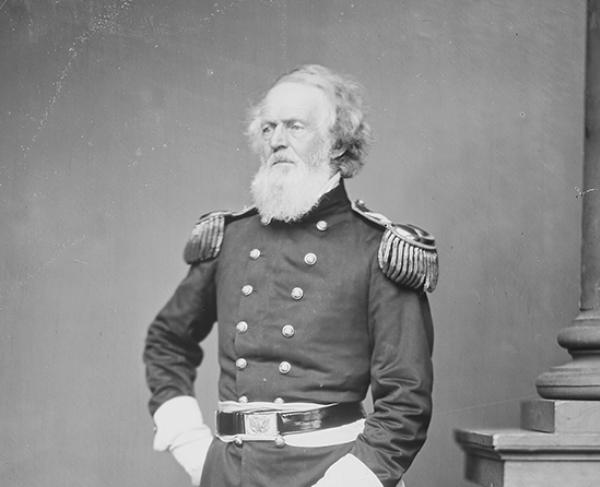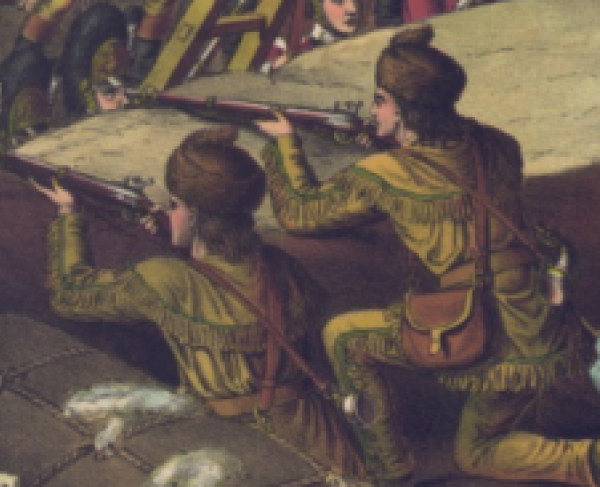Joseph K.F. Mansfield

Descended from some of the earliest English settlers in what eventually became the United States, Joseph King Fenno Mansfield was born in New Haven, Connecticut, on December 22, 1803. At the age of thirteen, Mansfield entered the U.S. Military Academy at West Point. In 1822 he graduated second in his class of forty, a class that included future Civil War generals Isaac R. Trimble, David Hunter, and George A. McCall.
After completing his education, Mansfield was commissioned second lieutenant in the Army Corps of Engineers, tasked with the construction of coastal defenses in the South. In 1832 he was promoted to first lieutenant and in 1838 he received a captaincy. During the Mexican War, he was General Zachary Taylor’s chief engineer and took part in several engagements, including the Battle of Monterey, where he was wounded in the leg, and the Battle of Buena Vista.
During the Mexican War, Mansfield was brevetted three times for gallant and meritorious service. He ended the war as a brevet colonel. In 1853, he was appointed as a colonel in the office of the inspector general, a position he received due to the recommendation of Secretary of War Jefferson Davis.
Shortly after the outbreak of the Civil War, Mansfield was appointed brigadier general in the regular army and given the responsibility for defending the national capital. In his capacity as the commander of the Department of Washington, Mansfield seized and fortified several positions on the south bank of the Potomac River. In the autumn of 1861, he was stationed at Hatteras Inlet on the coast of North Carolina.
At the Battle of Hampton Roads (March 8-9, 1862), Mansfield was in command of coastal batteries that fired upon the CSS Virginia as the ironclad wrought havoc amongst the Union fleet. When the Virginia’s commander, Franklin Buchanan, sent two small vessels to take possession of the USS Congress, one of Mansfield’s subordinates reminded the general that the rebels had the right to proceed as the Congress had surrendered. Mansfield replied, “I know the damned ship has surrendered, but we haven’t!” Infuriated by Mansfield’s decision, Buchanan seized a rifle and went up on the top deck of the Virginia to fire back at the Union soldiers, only to be shot in the groin.
Two days before the Battle of Antietam, after several months commanding a division of the Seventh Corps in southern Virginia, Mansfield was placed in command of the Twelfth Corps. On the morning of September 17, 1862, before getting a chance to familiarize himself with his new command, Mansfield was sent into action to support the left flank of General Joseph Hookers’ First Corps. Mansfield diminished the offensive power of his forces by keeping them in a column formation, which was better suited to marching than to fighting. In the vicinity of the East Woods, the general encountered one of his regiments, the 10th Maine, firing into the woods. Under the impression that his men were firing at Hooker’s soldiers, Mansfield ordered them to stop. The men from Maine convinced Mansfield that they were indeed engaged with rebel forces. Mansfield admitted, “Yes, yes you are right” only to be mortally wounded in the chest. Alpheus Williams took over as the acting commander of the Twelfth Corps. Mansfield died the next morning at a field hospital on George Line farm.
On March 12, 1863, Mansfield was posthumously promoted to the rank of Major General of Volunteers. He is buried in Indian Hill Cemetery in Middletown, Connecticut.


